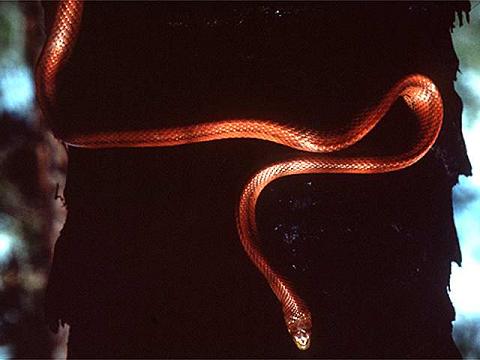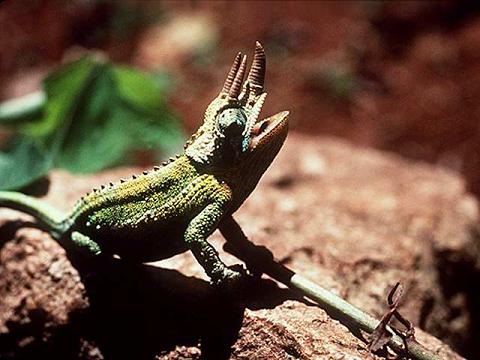
 |
|
|---|
|
HOW ANIMALS PROTECT THEMSELVESThe world of an animal is filled with danger from enemies. This section describes some of the many ways animals protect themselves from such danger. Hiding in a safe place. The best protection against a predator is to avoid being seen by it. Many animals rest or sleep in a safe hiding place. Some desert toads crawl down a crack in the mud. A cricket hides under a large rock or under the loose bark of a tree. Worms and moles dig underground tunnels. Many species, such as rabbits, leave their nests mainly or only at night, when they are harder for enemies to spot. Other species become active for only short periods so they are not exposed to predators for long. Camouflage. Many animals are difficult for enemies to see because they resemble their surroundings. The various ways animals blend with their surroundings are called camouflage. For camouflage to be effective, the animals must remain motionless or nearly so. Protective coloration is coloring that helps animals to hide. A dark moth lying against the brown or black bark of a tree is hard to see. However, that same moth would be clearly visible if it sat on a green leaf. 
A number of animals can change their colors and thus remain camouflaged even when moving among backgrounds that have different colors. The chameleon, a type of lizard, is green when surrounded by leaves but turns brown when moving slowly on bark or on the ground. The ptarmigan, an Arctic bird, is brown in summer but becomes white in winter, when snow covers the ground. Mimicry helps many animals avoid predators. Some animals mimic (resemble) other objects in their environment. For example, many green insects are shaped like leaves. Some caterpillars look like lizards or bird droppings. Walkingstick insects are shaped and colored like twigs. Anglerfish resemble rocks on the ocean floor. 
Batesian mimicry is a form of mimicry in which an otherwise harmless animal strongly mimics an offensive animal. This type of mimicry was named after the English naturalist Henry W. Bates, who studied it in the 1800's. Bates observed that some harmless species have coloring and behavior that make them look like a dangerous or bad-tasting animal. A predator spotting such a species may mistake it for the undesirable animal and leave it alone. For example, viceroy butterflies are believed to be tasty to birds. But birds rarely attack them because they look like foul-tasting monarch butterflies. Escaping by flight. Many animals run away from an attacker. Antelope sprint away at high speed when charged by a lion or a cheetah. Many animals stay near safe places, such as burrows, and run to them if attacked. The octopus squirts a black inky fluid to conceal itself and then quickly swims for safety. Armor. Some species have a hard shell or covering that is used as armor against predators. Clams pull back into their shells when a predator approaches. Many turtles can pull in their head, legs, and tail when attacked. Armadillos and pangolins are covered by hard, bony plates. When frightened, these animals roll into a tight ball that is difficult for enemies to penetrate. Playing dead. A few species sometimes fool predators by lying motionless and appearing to be dead. If the predator does not deliver a killing blow or bite, then the animal may have a chance to escape. A threatened opossum goes limp. The hognose snake flips onto its back when a predator approaches. Giving up a body part. Many animals break off a nonessential part of their body when attacked. The glass lizard breaks off its tail, which flops about and attracts the attention of the predator. While the attacker struggles with the tail, the lizard escapes. In most cases, the lost body part grows back quickly. Fighting. Many animals have special weapons for fighting predators. The sharp hooves of a moose or the claws of an ostrich can rip open an enemy. Porcupines have long, sharp quills on their back, sides, and tail. These animals strike attackers with their quilled tails. The quills come out easily and stick in the attackers. Bees and wasps sting animals that approach their nests.
|
|
|---|
|
|---|